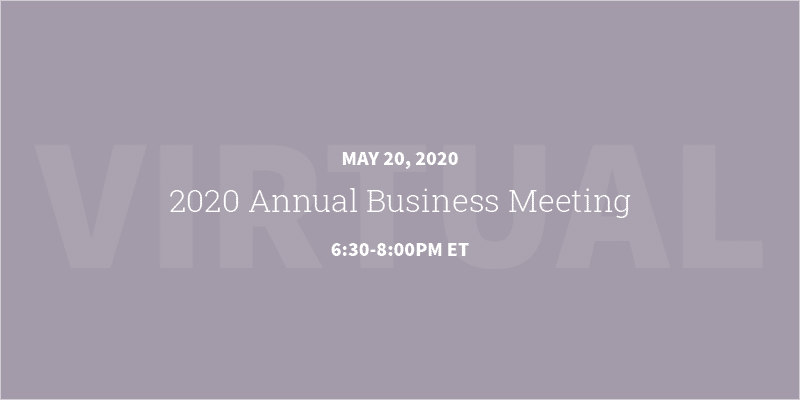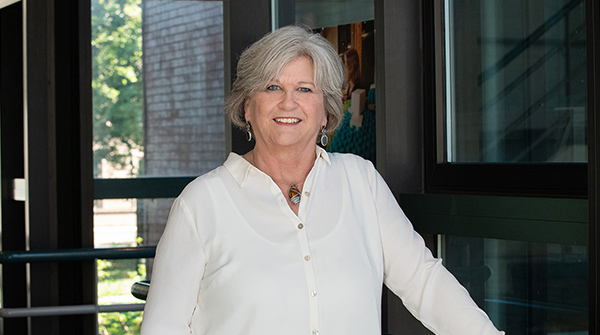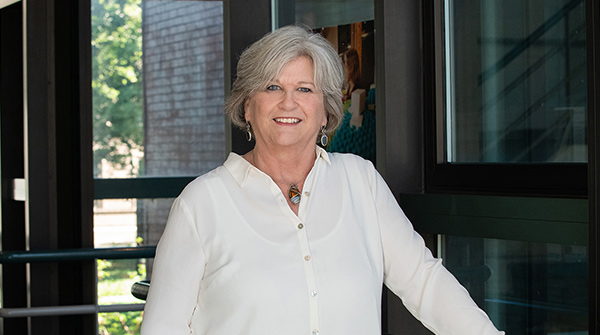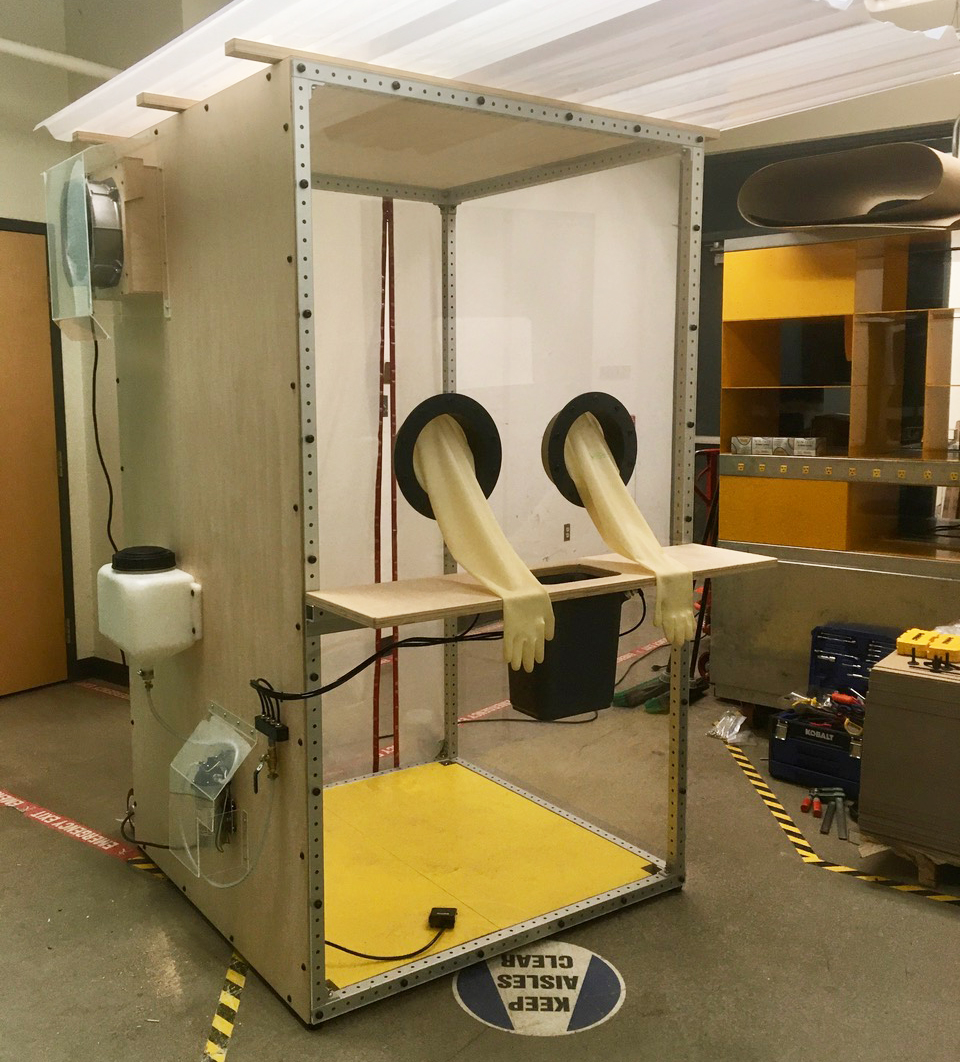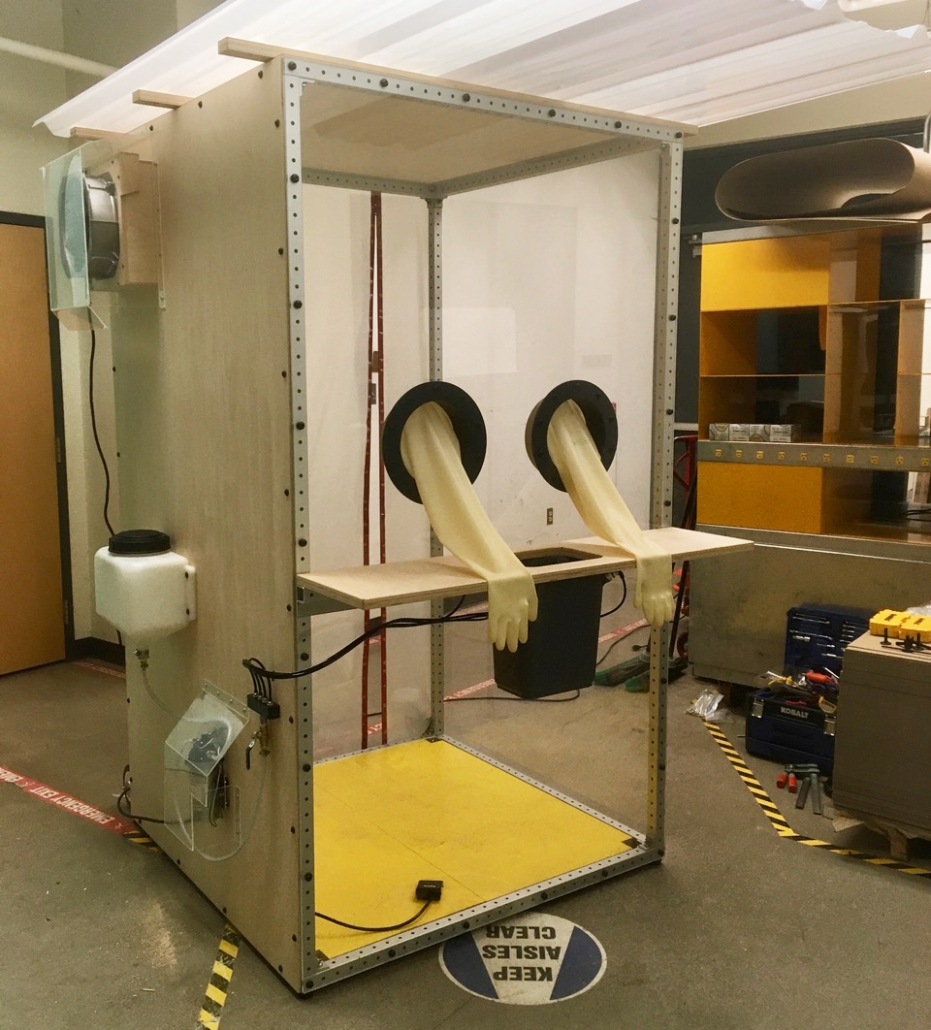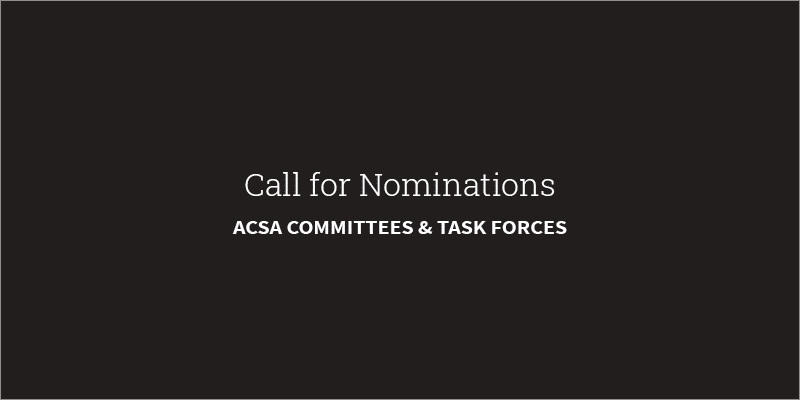They Stepped Up: Vendors During the Coronavirus
AASL Column, April 2020
Lucy Campbell and Barbara Opar, column editors
Column by Barbara Opar
It is a changed world out there. We in academia have had to adjust very quickly—faculty to preparing lectures with the resources on hand and then recording them online using newly prescribed software; librarians to dealing with reference queries that were once easy to answer in the print world but now with limited online content. And what about our students? They can no longer presume that they can consult older periodical issues or study structural systems on actual drawings. Many are unaware of what they cannot access. All of us have had to make quick adjustments to different resources and content.
But we have had support. Many vendors have stepped up and offered free content for the duration of the pandemic without the expectation of purchase. Examples are numerous and often surprising. By March 25, RedShelf and VitalSource opened access to hundreds of textbooks for free to faculty and staff at qualifying colleges and universities impacted by this crisis. Proquest is offering access to 150,000 titles. Sage Knowledge and Project Muse are on board as well as presses like Duke University and the University of Michigan. Brepolis and DeGruyter are among more commercial vendors expanding their access to nonsubscribers. Want to keep current with periodical literature? Then you can turn to Flipster or RBDigital. Streaming video content is being offered up by ArtFilms Digital, Kanopy, and Swank. The list goes on. Academic libraries with such access have often listed it right on their home pages. Your architecture librarians have taken this one step further and tailored this information for your own institution.
But there are two other important sources of content that I wish to bring to your attention. The first is Hathi Trust which was initially designed as a collaboration of the Big Ten Academic Alliance, the University of California system and the University of Virginia to establish a repository for archiving and sharing digital collections. Many other libraries have joined. As a repository, Hathi Trust contains both public domain as well as copyrighted material. By request, member libraries now have temporary digital access to over 50 percent of copyrighted print holdings. Libraries must meet standards such as no physical access to print collections and adhere to the Trust’s copyright guidelines. Check your libraries’ database menu. There are also ways to access some content as a guest at the organization’s site.
Everyone has also heard about the Internet Archive. But you may not know much about its latest initiative which some consider very controversial. The Internet Archive is a 501c 3 non-profit organization based in San Francisco and founded in 1996 by Brewster Kahle. To date, it has captured 20 petabytes of data. It partners with libraries to preserve and make accessible 20th-century resources in a broad array of topics and formats. The mission of its Open Library is “universal access to all knowledge”. In early March as the United States was beginning to understand the pandemic, the Internet Archive launched the National Emergency Library. Instead of controlling the number of copies of a title circulating at a time, the Library decided to remove limits. Traditionally, the number of copies available for circulation was based on the number of print copies in its own collection, and a waitlist was created for additional borrowers. That feature has been removed, allowing for unlimited access. The Internet Archive does not claim to include everything, but a quick search of the late Michael Sorkin’s writings shows some interesting content. One of two titles available here, but not commercially through any vendors, is the popular Variations on a Theme Park, making the Internet Archive another valuable source of online content. Initially well received and endorsed by a significant number of libraries including MIT, the Archive is now facing lawsuits and backlash from groups including the Authors Guild.
Life as we knew it has changed overnight. We are all proceeding as best as we can and making use of what is at hand and easily obtainable. What is certain is that each of these initiatives has helped in some way. Library suppliers have been offering deferred payments and cost reductions. The free albeit temporary content has made a tremendous difference in the past month and a half and will continue to do so as we all work to provide the services for which we are responsible.
ACSA Revises Bylaws to Access Government Funding
ACSA Revises Bylaws to Access Government Funding
Thank you to all the schools that voted. We are pleased to announce that the membership approved the Bylaws revisions, which go into effect immediately. Download the bylaws here.
Background
The ACSA Board of Directors voted on April 16 to initiate a minor revision to our Bylaws that will enable ACSA to apply for funds that have been available under programs such as the U.S. Coronavirus Aid, Relief, and Economic Security Act. An email was sent to Faculty Councilors on the same day, asking that they consider the revision and vote by April 24.
Although ACSA is financially solvent and strong, like everyone else we are feeling the impact and financial insecurity of the pandemic due to the cancellation of the in-person Annual Meeting and the effects on our investments. The CARES Act funds are available as forgivable loans to fund staff salaries, benefits, and other expenses. Access to these funds would help the organization finish out the fiscal year.
The ACSA Bylaws previously prohibited the organization from borrowing money. Given the availability of relief funds, the board voted to initiate a limited bylaws revision (noted in red).
MOTION FROM THE ACSA BOARD OF DIRECTORS to adopt the following amendment to the Bylaws of the Association shown in text edits.
XI.4 Borrow Money. The Association shall not execute any promissory note or otherwise borrow money, except (a) in the event of a financial or other emergency to participate in government relief programs that are not anticipated to result in long-term debt or (b) in the event of a purchase of real estate for use as the Association’s headquarters approved by the Board of Directors.
University of Nebraska-Lincoln
The College of Architecture is pleased to announce Dean Katherine S. Ankerson, FIIDA, was one of six International Interior Design Association (IIDA) members inducted into the prestigious IIDA College of Fellows for 2020.
Ankerson joins an elite peerage, an honor few can claim with less than 1% of IIDA members elevated to the College of Fellows, and of those fellows, only a select few are full-time educators.
According to IIDA, induction into the College of Fellows honors a member’s achievements and contributions to the profession and the association. It is the highest and most prestigious honor IIDA bestows. The College of Fellows is composed of members who have demonstrated outstanding and exemplary professionalism and leadership.
“The IIDA College of Fellows honors IIDA members who have demonstrated significant accomplishments within the association and their own design communities. This year’s inductees are thought leaders, inspiring educators and design innovators. We are pleased to be welcoming them for this term,” said College of Fellows Chair Guy Geier, FIIDA.
This fellowship adds to Ankerson’s long list of accolades and accomplishments as an educator and advocate for the design community. In addition to the IIDA fellowship, Ankerson was honored by the Interior Design Educators Council (IDEC) in 2017 as a fellow and has held numerous prestigious professional positions. She has served as a board member for design organizations such as the Council for Interior Design Accreditation (CIDA), the American Institute of Architects-Nebraska (AIA NE), the AIA NE Foundation, the Nuckolls Fund for Lighting Education and IDEC among other professional contributions.
In addition to IIDA, Ankerson is a member of the American Institute of Architects (AIA) and the Interior Design Educators Council (IDEC). She is also a licensed architect in Washington and Nebraska and holds a National Council of Architectural Registration Boards (NCARB) certificate.
“It is humbling to be named an IIDA fellow and listed among the ranks of professionals who I’ve always admired,” commented Dean Ankerson. “As with every honor there is opportunity, and I hope to learn from this esteemed peerage of designers and galvanize the next generation of designers to be leaders and innovators who will plan boldly, design fearlessly and realize their limitless potential for what is possible.”
ACSA Initiates Bylaws Revision to Access Government Funding
ACSA Initiates Bylaws Revision to Access Government Funding
Michael J. Monti
The ACSA Board of Directors voted on April 16 to initiate a minor revision to our Bylaws that will enable ACSA to apply for funds that have been available under programs such as the U.S. Coronavirus Aid, Relief, and Economic Security Act. An email was sent to Faculty Councilors on the same day, asking that they consider the revision and vote by April 24.
Although ACSA is financially solvent and strong, like everyone else we are feeling the impact and financial insecurity of the pandemic due to the cancellation of the in-person Annual Meeting and the effects on our investments. The CARES Act funds are available as forgivable loans to fund staff salaries, benefits, and other expenses. Access to these funds would help the organization finish out the fiscal year.
Currently, the ACSA Bylaws prohibit the organization from borrowing money. However, the Board of Directors has determined that it is important for the organization to access relief funds. Therefore, the board voted to initiate this limited bylaws revision (noted in red).
MOTION FROM THE ACSA BOARD OF DIRECTORS to adopt the following amendment to the Bylaws of the Association shown in text edits.
XI.4 Borrow Money. The Association shall not execute any promissory note or otherwise borrow money, except (a) in the event of a financial or other emergency to participate in government relief programs that are not anticipated to result in long-term debt or (b) in the event of a purchase of real estate for use as the Association’s headquarters approved by the Board of Directors.
In normal times ACSA would not ask for such speedy action on amendments to our Bylaws. We believe this action is important to the organization and that the change is limited and specific to our circumstance today.
Please contact the ACSA executive director or president with any questions.
Pennsylvania State University
UNIVERSITY PARK, Pa. – A team of faculty, graduate students and staff from the Stuckeman School and the College of Engineering at Penn State have teamed up to design and build a “glove box nursing booth” prototype that could potentially be used by health care providers working at drive-thru COVID-19 testing sites.
It is well documented that the surge of COVID-19 cases across the country has led to an unprecedented shortage in personal protective equipment (PPE) for medical professionals on the front lines of the pandemic. Penn State has stepped up to address the shortage through the University-wide Manufacturing And Sterilization for COVID-19 (MASC) Initiative.
Researchers in the Stuckeman Center for Design Computing (SCDC) in the College of Arts and Architecture and the School of Engineering Design, Technology, and Professional Programs (SEDTAPP) are building off of that initiative by prototyping a nursing booth that is designed to allow health care employees working at drive-thru COVID-19 testing sites to safely collect samples from patients who may be infected with the coronavirus. The booth, which has been named the Barrier for Outside Outpatient Testing of Heath (BOOTH), could also eliminate the need for PPE – such as masks, gloves and gowns – as it provides a highly protective barrier between the provider and the patient. It also features a built-in sanitizing system.
José Duarte, director of the SCDC and the Stuckeman Chair in Design Innovation, served as the multidisciplinary team leader and said a similar testing booth developed by doctors at Brigham and Women’s Hospital in Boston was used as a reference. An initial proposal was designed by Naveen Muthumanickam, an architecture doctoral student, with assistance from Felecia Davis and Marcus Shaffer, both faculty members in the Department of Architecture; Jamie Heilman, digital fabrication and specialized technologies coordinator in the Stuckeman School; and Duarte.
“The idea was to design and construct a scaled-up version of what engineers and scientists call a ‘reversible glovebox or isolation glovebox,’” explained Muthumanickam. “Our version would need to accommodate a nurse who stands inside a booth and uses the reversible gloves to collect nasal swabs from patients outside the booth, thus preventing spread of the virus through contact.”
A number of important factors drove the design of the BOOTH, including the fit, the height and spacing of the arm holes and the need for the patient to remain in fresh air. Shaffer said the architects turned to a book on human factors called “Measure of Man,” which is a resource architecture faculty often reference with their students. The team also relied on the ergonomic expertise of Matthew Parkinson, director of the Learning Factory and professor of engineering design and mechanical engineering.
“In terms of the anthropometric information, selecting the correct data and using the information in a knowledgeable way by making some assumptions for the bodies that will occupy and use the testing booth were important to the overall design,” said Davis, who is the director of the Computational Textile Lab (SOFTLAB) in the SCDC.
The team also decided that completely sealing the booth and incorporating a device to automatically sanitize the gloves after each test were must-have features that were not part of the referenced booth.
Both Shaffer and Heilman have extensive backgrounds in fabrication and assembly and were able to inform Muthumanickam’s design in terms of material choices, portability and cost.
“In general, my role is to help students and faculty learn to use our school’s design and fabrication tools to bring their projects from ideas to physical objects,” said Heilman. “The BOOTH project is an exciting change of pace because this time I get to be involved in the entire process, from design meetings through fabricating a finished prototype. The fact that we are taking part in a massive effort within the University, the nation and the world, makes this work even more fulfilling.”
Standard parts for the frame – including lightweight aluminum, bolts, infill acrylic and plywood – were ordered from online vendors and shipped to Shaffer’s home, where he got to work.
“A big part of the design is the concept of employing ‘off the shelf’ materials – hardware and parts,” said Shaffer. “We can’t spend time making parts from raw materials.”
Another factor that came into play is the needed ability to sanitize the BOOTH, which meant using materials such as aluminum, stainless steel, plastic and painted components that would stand up under sanitization without compromising the structure.
Shaffer constructed the structural frame and flooring for the test station – which measures 7 feet tall by 4 feet wide by 4 feet deep – using the tools and workspace in his garage.
“We all want to be safe and each of us has the moral obligation to contribute to this common goal whenever we can.” – José Duarte
While Shaffer was assembling the framework, Nate Watson, a master’s student in the Additive Manufacturing and Design program, was building the mechanical systems for the booth with remote guidance from Sven Bilén, head of SEDTAPP and professor of engineering design, electrical engineering and aerospace engineering. Watson was able to find all of the parts online with minimal custom fabrication needed and had them shipped to his home.
“The sanitizing mechanism feeds a sanitizing liquid from a reservoir through a pump, which distributes the liquid to four misting nozzles that are mounted in the corners of a plastic collection container,” explained Watson. “The nozzles are able to spray a thin but complete covering over the gloves to kill any potential viruses between users of the booth and the booth attendant is able to trigger the pump on and off using a foot pedal located inside of the booth.”
Since the team decided the BOOTH needs to be sealed completely in order to provide the most protection to health care workers, Watson also designed the system to regulate indoor air quality and temperature.
“Lack of access to our usual tools and prototyping facilities were probably the most challenging obstacles to overcome,” said Bilén. “Also, design is typically a fairly social process – and includes the building of physical prototypes together – but here, we had to be cognizant of social distancing guidelines.”
Once the framework and the electrical systems were complete, Shaffer and Watson staggered dropping their respective pieces off to a central collection site where Heilman got to work completing the structure.
According to Muthumanickam, designing the booth in a modular fashion, remotely and by different people, required the highest level of precision.
“The most challenging part was to coordinate such high-precision construction and fabrication details across multiple people working on various parts remotely,” he said. “There had to be little to no margin of error as even a small glitch, such as the wrong part being ordered or a simple assembly mistake being made, might take longer than usual to rectify due to [Gov. Tom Wolf’s ‘Stay-at-Home’] order and remote working conditions.”
The team relied on Skype, Microsoft Teams and Zoom for their design meetings, and cloud storage, like Box, for file and information exchanges. Advanced remote collaboration features, such as annotating a participant’s screen and being able to remotely control a participant’s screen, allowed the team to interactively modify the design during their review meetings.
While he missed the interaction of working through iterations in person with a team, Watson considers himself lucky to have been a part of this unique group effort.
“The whole project was very motivating, knowing that we were creating something that could help those on the front lines fighting for our own safety,” said Watson.
Once the prototype is tested, the team will be able to further tweak the design.
“We will be able to see if nurses should sit or stand, if the arms are placed in a comfortable way . . . as well as how much time nurses have in between doing tests that would inform the positing of their arms,” said Davis.
Duarte said he felt compelled to lead the project as both a researcher and a member of the community.
“We all want to be safe and each of us has the moral obligation to contribute to this common goal whenever we can,” he explained. “For most of us right now, this simply means complying with social distancing guidelines; however, as a research director at Penn State, it also means fulfilling the community outreach goal of the University so when the opportunity arose to help, I was immediately up for the challenge.”
Shaffer, who is also 3D printing face shields from his home, echoed Duarte’s thoughts and expanded on his own position.
“For many of us . . . design and architecture for populations in humanitarian crisis is a deep interest,” he said. “We are involved in architectural environments of scarcity and need – through our teaching, through the graduate students we advise and through our own research – but it is always at some distance because we are here, on a campus in the middle of Pennsylvania. But today, we are also that population, we are also in that environment; and luckily, we can respond, through our long-formed knowledge and through action.”
Pennsylvania State University
UNIVERSITY PARK, Pa. – Marcus Shaffer, associate professor of architecture, and two architecture graduate students in the Stuckeman School have joined the efforts of the worldwide additive manufacturing community in 3D printing face shields that could potentially be used by doctors, nurses and healthcare workers, who are on the front line of the COVID-19 pandemic.
Shaffer, along with the husband and wife team of Julio Diarte and Elena Vazquez, who are both doctoral students, are 3D printing the headbands and hand-cutting the shields from transparent sheets from their respective homes in State College. They are using the online guide created by architect Jenny Sabin, which Shaffer found when researching ways he could use 3D printing to help during the pandemic.
Sabin’s lab and the College of Architecture, Art, and Planning at Cornell University – where Sabin is the Arthur L. and Isabel B. Wiesenberger Professor in Architecture – are collaborating with other Cornell departments to address the need for personal protective equipment (PPE) at Weill Cornell Medical Center in an initiative called “Project PPE.”
Shaffer said he was compelled to help because he knows how design enriches all of our lives. “Many of my friends are artists, designers, architects . . . and this period of isolation has made clear how rich our lives are because we can be productive by making things that are beautiful, useful or both,” said Shaffer. “As a person who spent a significant time of my life as a designer working in New York City, I just felt compelled to turn my tools and machines toward potentially helping that city.”
Having lived in New York during the 9/11 attacks, Shaffer said that the feelings of loss and uncertainty, coupled with the city as a whole coming to a standstill back then, are still fresh in his memory.
“When I found Jenny Sabin’s website and Project PPE, I turned on the 3D printer in my little factory here at home and it literally has not stopped,” added Shaffer.
Diarte, one of Shaffer’s advisees, said he and Vazquez felt compelled to assist with the effort after reading about the MASC initiative at Penn State.
“Elena and I borrowed a 3D printer from the FORMAT Lab in the Stuckeman School to continue our research at home, so we figured, ‘why not print some headbands in the downtime when we’re not working?’” explained Diarte. “We take turns at home – one works on their research and the other prints – and then we switch.”
As of Thursday, Shaffer, Diarte and Vazquez had printed 70 headbands and the trio expects to print another 100 this week.

 Study Architecture
Study Architecture  ProPEL
ProPEL 
